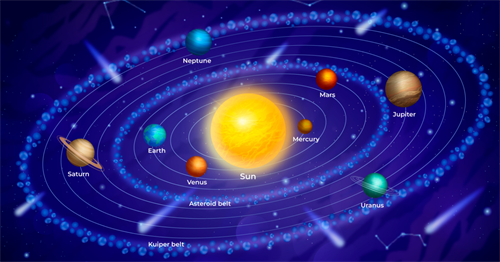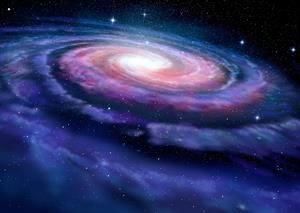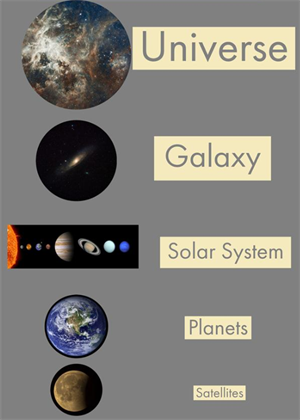
PUMPA - SMART LEARNING
எங்கள் ஆசிரியர்களுடன் 1-ஆன்-1 ஆலோசனை நேரத்தைப் பெறுங்கள். டாப்பர் ஆவதற்கு நாங்கள் பயிற்சி அளிப்போம்
Book Free DemoHave you ever wondered watching a night sky?
The experience of watching the sky at night with stars and the moon will be wonderful in a place where the air is so clear without any bright light.

Night sky
Astronomy is a branch of science that deals with the study of celestial objects and, therefore, the phenomena related to them. It involves the study of the evolution of the universe, the formation, position, composition and motion of the celestial objects.
The celestial objects in the sky are the Sun, the Stars, the Planets, the Moon and other objects like Comets and Asteroids.
Solar system:
The solar system comprises the Sun at the centre and the celestial bodies such as planets, comets, asteroids, and meteors that revolve around it in a fixed orbit. The celestial objects revolve around the Sun due to the force of gravitational attraction between them.

Solar system
The solar system comprises of eight planets. Based on the order of their increasing distance from the Sun, they are arranged as, Mercury, Venus, Earth, Mars, Jupiter, Saturn, Uranus and Neptune.
Galaxy:
A galaxy consists of a system of billions of stars and celestial bodies held together by the force of mutual or gravitational attraction.
Milky way:
The galaxy that we live in is the milky way galaxy. From earth, the milky way appears like a band of light in the night sky, hence got the name “milky”. The milky way galaxy is spiral in shape.

Milky way galaxy
Universe:
The universe consists of billions of galaxies. It comprises many constituents like a cluster of galaxies, stars and the solar system.

Universe
Hierarchy of universe:
The hierarchy of the universe in terms of size is given below.

Hierarchy of the universe based on size
Reference:
https://www.freepik.com/free-vector/solar-system-infographic_6635045.htm#page=1&query=solar%20system&position=18